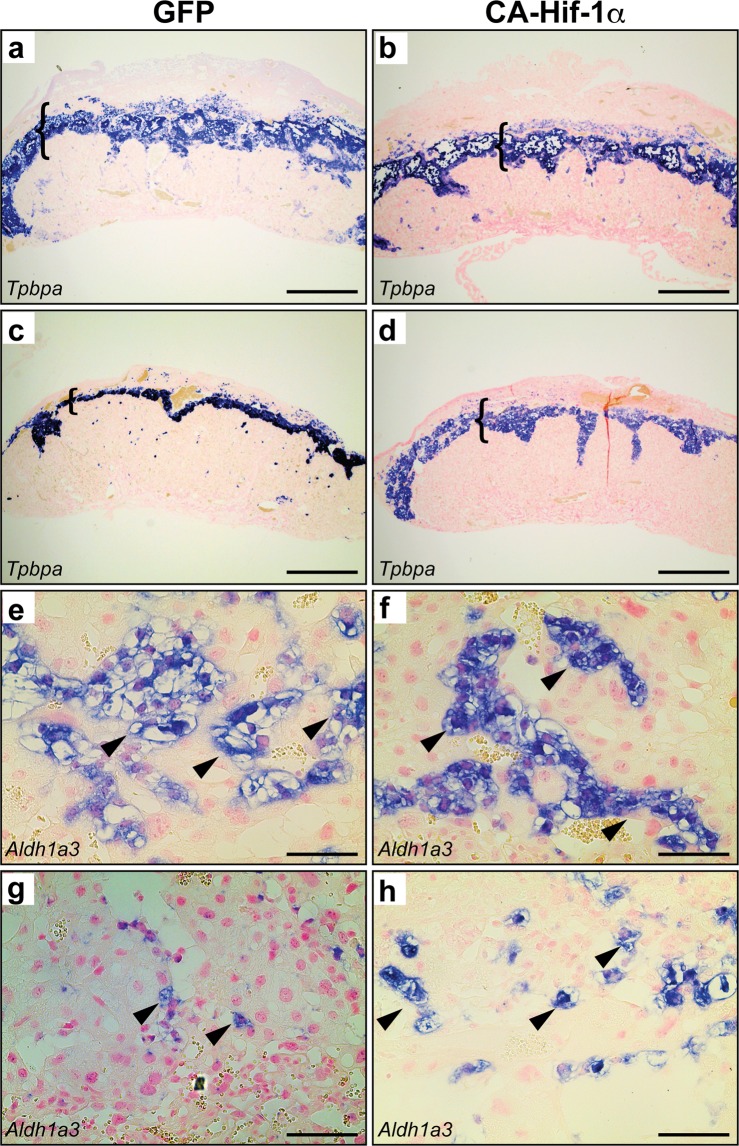Figure 4.
Junctional zone morphology is altered in CA-Hif-1α placentas at E14.5 and birth. Tpbpa, a marker of spongiotrophoblast and glycogen trophoblast was detectable in both GFP (a,c) and CA-Hif-1α (b,d) placentas and identified the junctional zone at both E14.5 (a,b) and birth (c,d). At E14.5, the junctional zone in CA-Hif-1α placentas appeared smaller and more compact than in GFP controls (brackets). While the GFP controls undergo a typical decrease in junctional zone size at birth (c), the CA-Hif-1α placentas did not exhibit the same rate of JZ reduction (d). Aldh1a3 identified glycogen trophoblasts (arrowheads) in the junctional zone of GFP (e,g) and CA-Hif-1α (f,h) placentas at E14.5 (e,f) and birth (g,h). At high magnification, it was evident that at E14.5 in CA-Hif-1α placentas (f), glycogen trophoblasts appeared smaller in size compared to GFP controls (e), with an increased density of nuclei. By birth, glycogen trophoblasts were mostly absent from the junctional zone of GFP control placentas (g); however, they were still present in CA-Hif-1α placentas (h). Scale bar = 500 μm in (a,b,c,d) and = 100 μm in (e,f,g,h).

